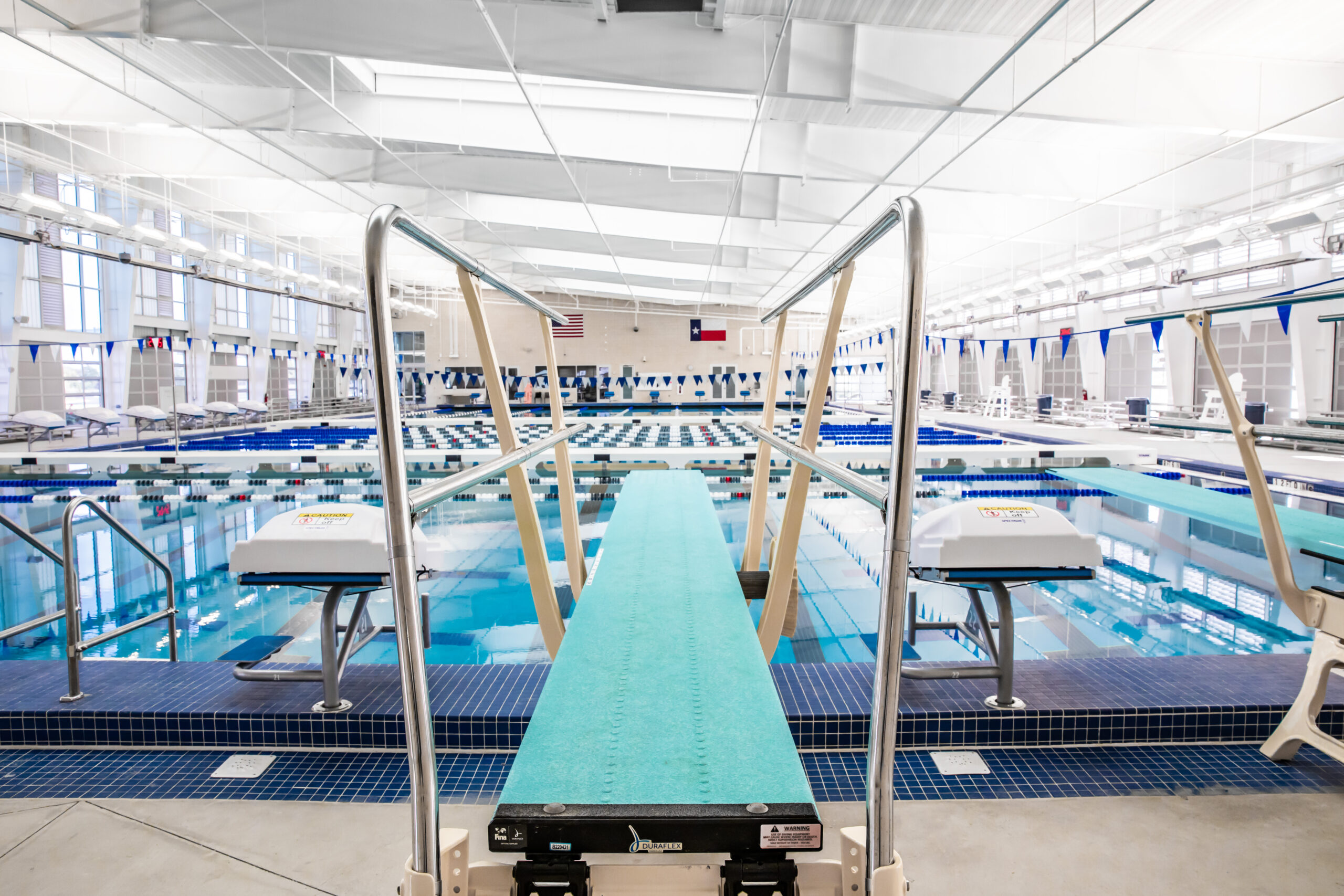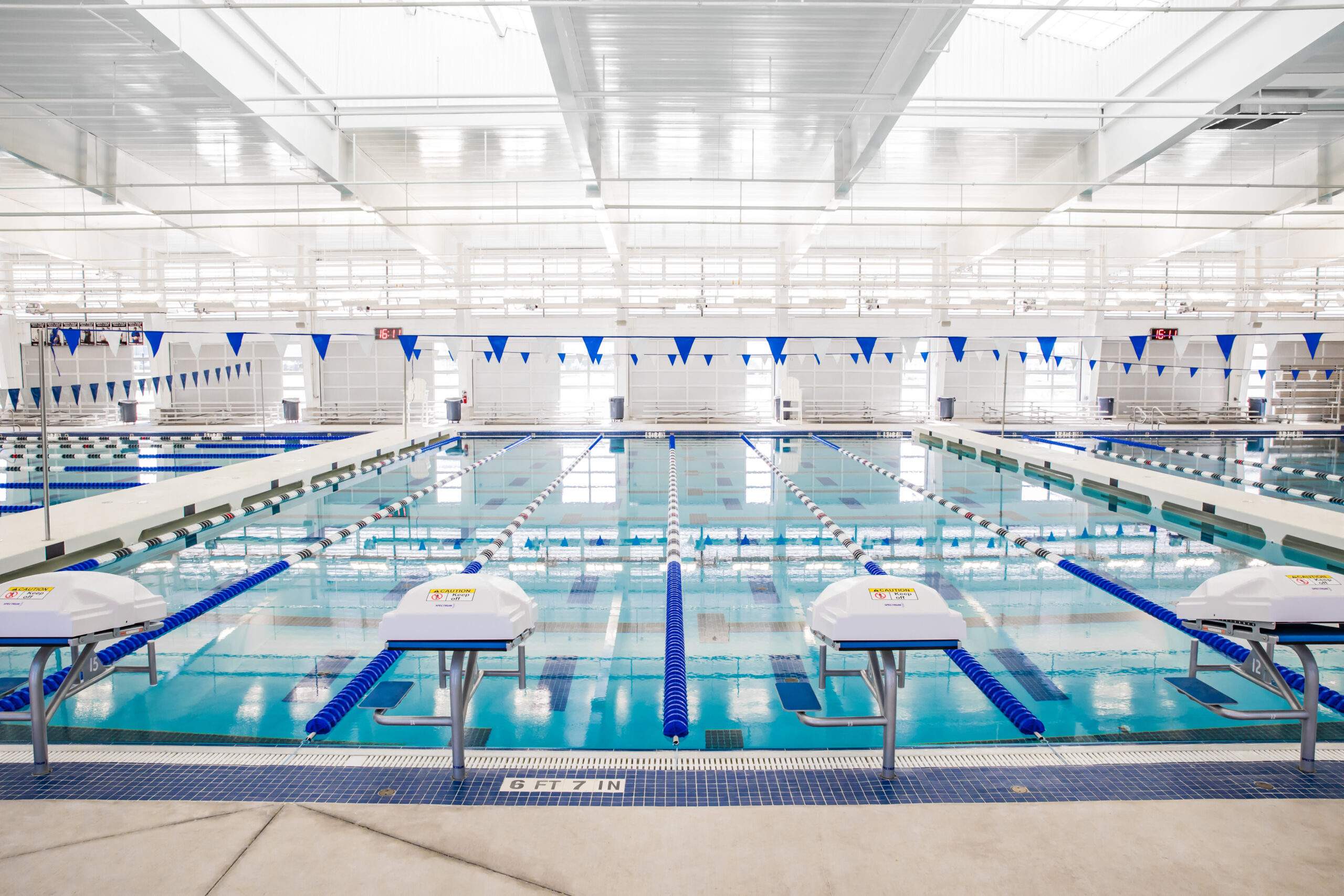The Round Rock ISD Aquatic Center is the district's newest and most inclusive aquatic center. The passively ventilated indoor 50-meter pool facility is located on the Cedar Ridge High School campus and was made possible by the voter-approved 2018 Bond. The bond also funded the construction of new schools and renovations to existing schools in the district.
The design team engaged with district leadership, staff, coaches, swimmers, and the community to craft a design solution that is highly efficient, cost-effective, and ready for additional growth in use and programming. The district’s primary initiative was to create a facility with the efficiency and flexibility to support training for three high school swim teams simultaneously, as well as the ability to host UIL-sanctioned high school meets. Additionally, the facility program provides for diving, water polo, lifeguard certification/training, youth learn-to-swim/water safety, fitness, wellness, and recreational aquatic activities.
The 63,000 sq. ft. facility was designed for two distinct bodies of water and the necessary support facilities to meet those needs. The 50-meter competition pool was constructed in phase 1 and provides program flexibility through utilization of two moveable bulkheads, springboard diving, and an “all-deep” water depth profile. The second body of water is designed as a future phase to add a 25-yard fitness pool which will enhance programming for warm-up, learn-to-swim, and other community activities. The center is open to the public for lap swimming, water aerobics, and lesson programming. It is also available for rental for private events.
The Round Rock ISD Aquatic Center is designed to be net-zero energy, meaning it will produce as much energy as it consumes. This is achieved through a combination of energy-efficient design and renewable energy technologies.
SUSTAINABLE FEATURES
• A combined heat and power (CHP) system that generates electricity and heat from a single fuel source, natural gas. This system is more efficient than traditional methods of generating electricity and heat.
• Passive ventilation for the pool enclosures, which means that they are designed to allow natural airflow to optimize ambient conditions within the space without the use of mechanical dehumidification or ventilation. This approach drastically reduces energy consumption by comparison to traditional natatorium facilities.
• Rainwater harvesting to collect and store rainwater for irrigation and other non-potable purposes.
• Solar panels to generate electricity.
The facility features operable doors along two complete sides of the swimming pool enclosure. This design approach is a critical part of the facility's sustainable design. This reduces the need for air conditioning, saving energy and operating costs.





